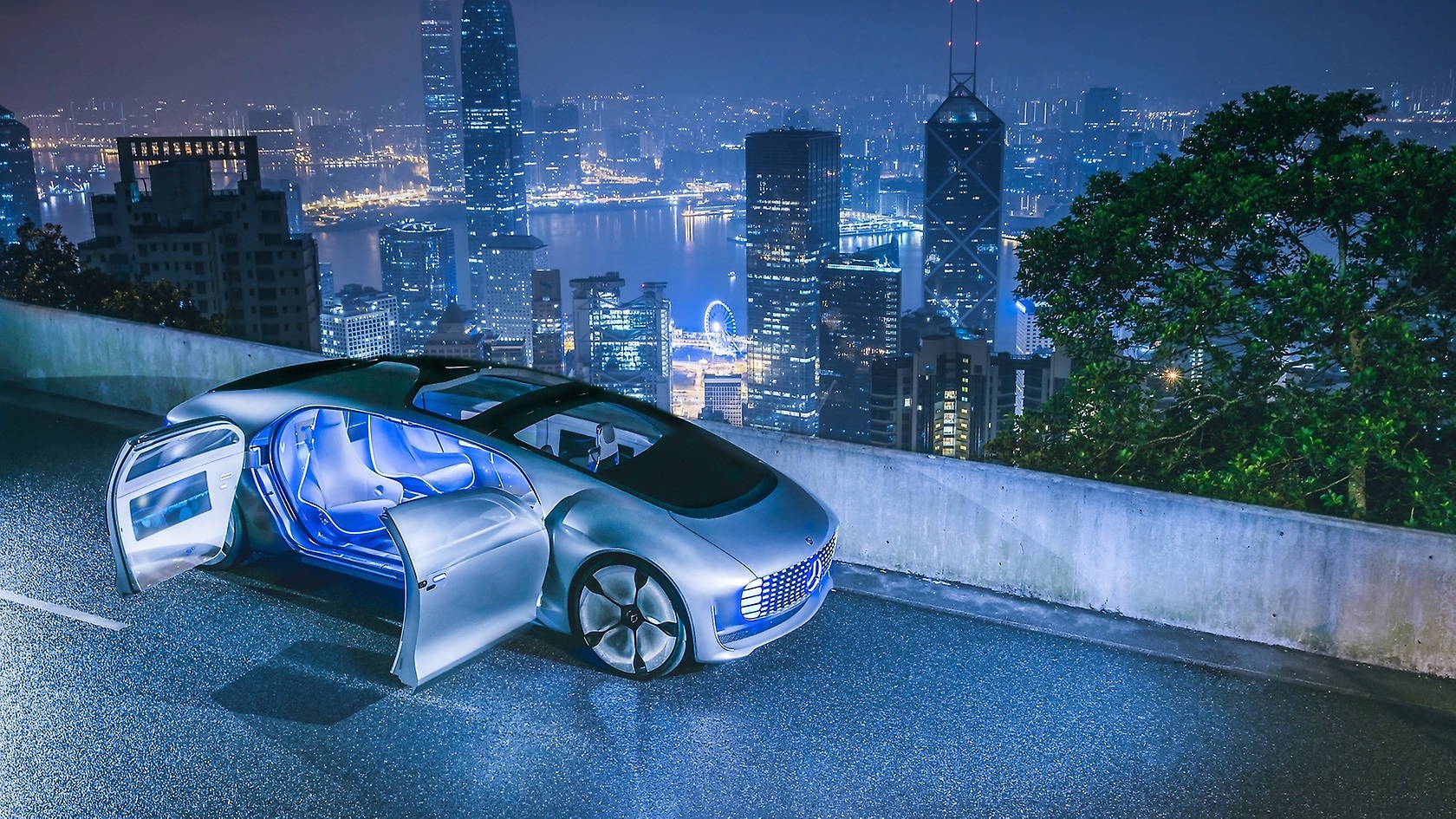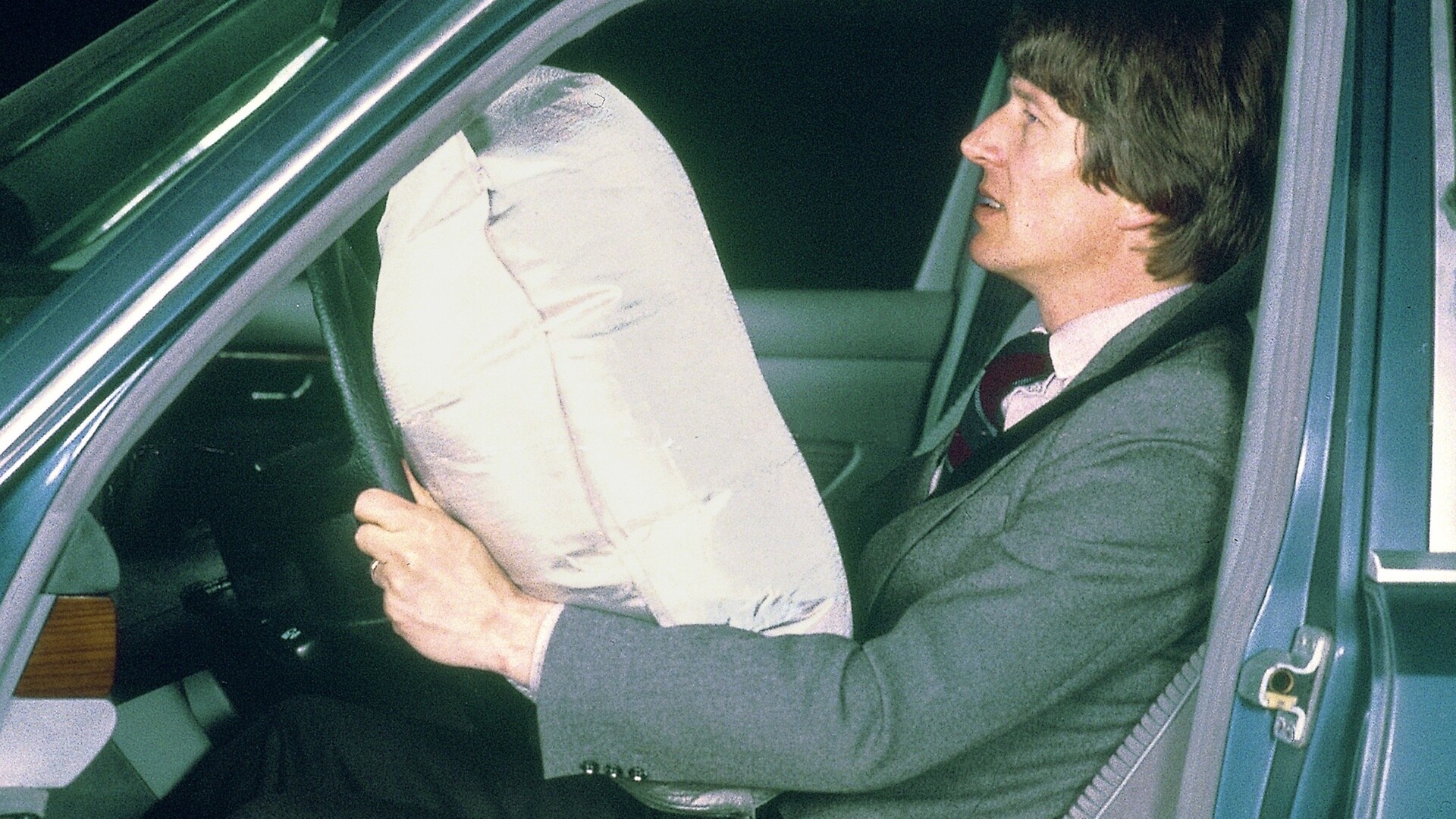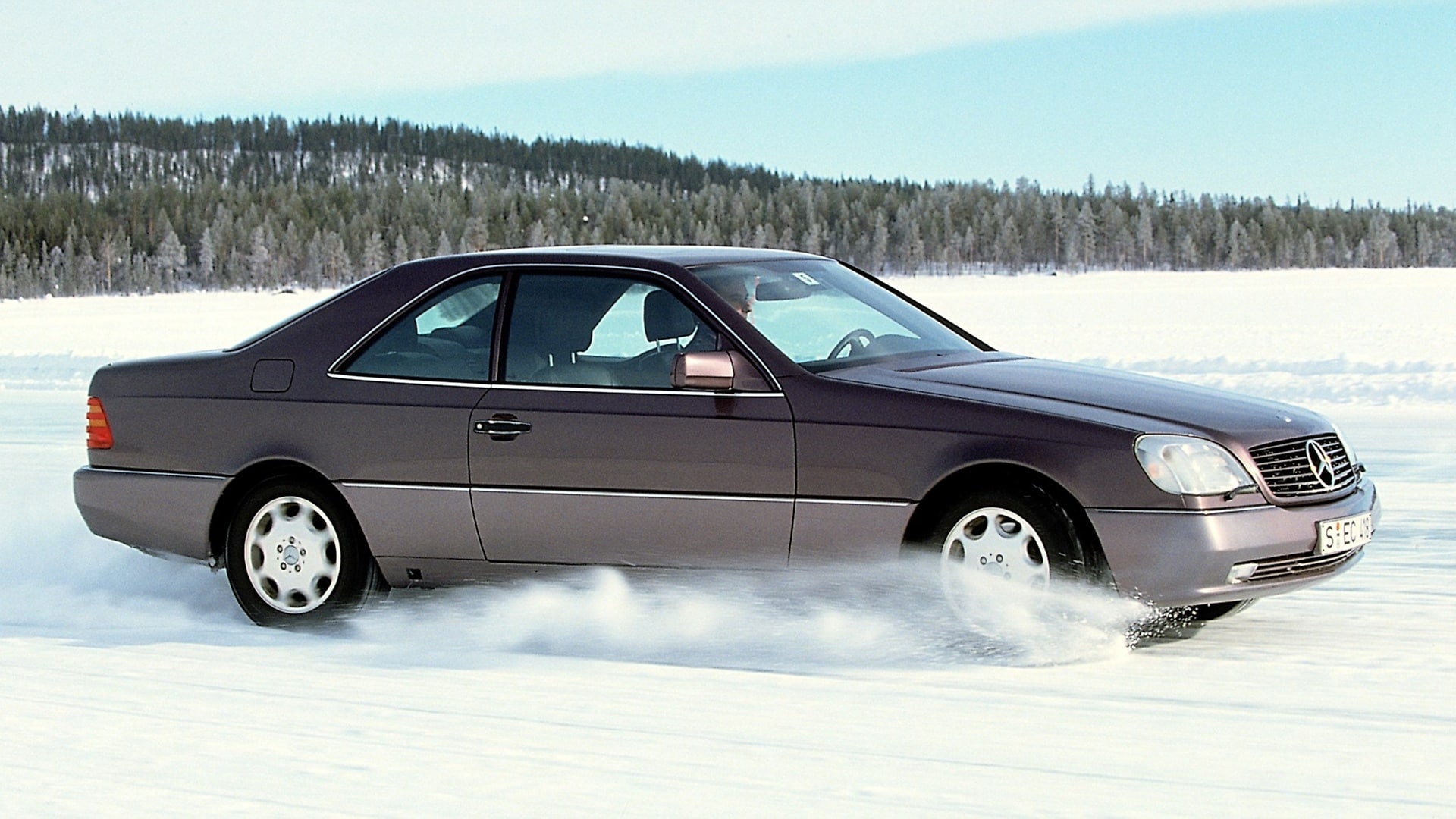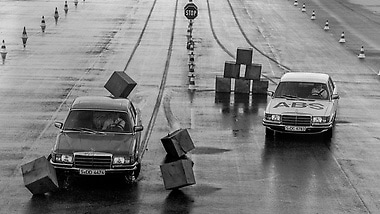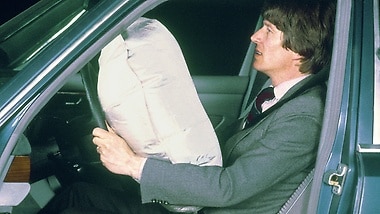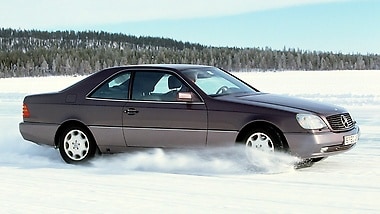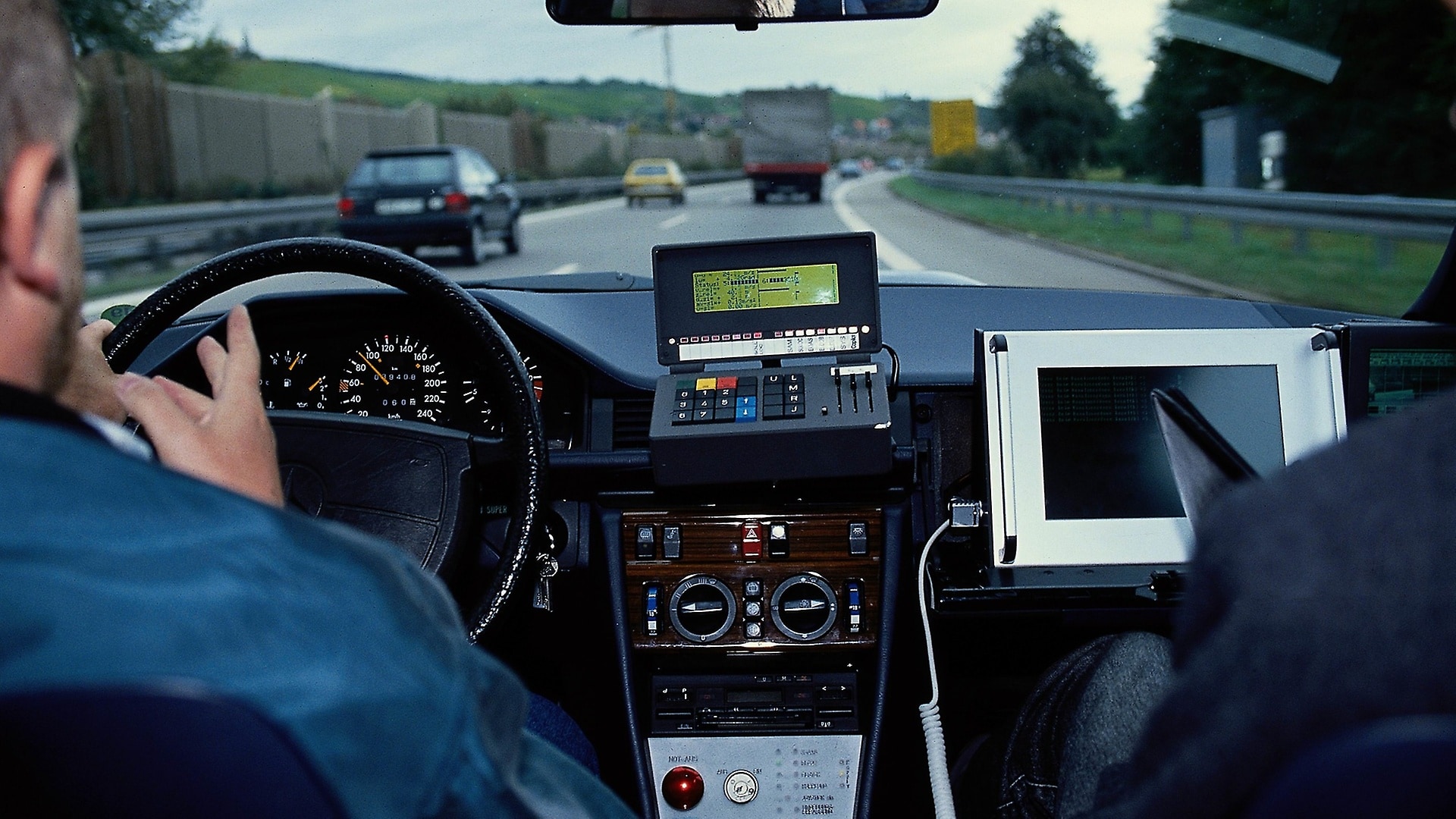Since the invention of the automobile in 1886, we have been setting standards in vehicle safety with our technical innovations. With more and more new and optimized safety systems, we continue to refine the field of safety in road traffic. Our "Intelligent Drive" assistance systems and their increasing networking are groundbreaking – and a milestone towards autonomous and accident-free driving.
People from all over the world put their trust in Mercedes-Benz for the things which are most valuable to them: In our vehicles people get married, children are born, lives are saved and grandchildren chauffeured. In short: Every day, millions of people rely on the fact that they and their loved ones are safe in a Mercedes. And for this, our developers give of their best worldwide.
From the innovation to the standard
Many formerly innovative safety technologies of Mercedes-Benz are taken for granted today across the industry. They make their contribution towards the fact that the number of fatal traffic accidents has been declining for several years. Known examples are technologies such as the anti-lock braking system (ABS), which was introduced in 1978 in the S-Class W 116, the airbag, presented in 1981 in the S-Class, or the Electronic Stability Program ESP®, which was first used in 1995 in an S-Class Coupe. Today, ABS and ESP® are a registration standard for all cars in Europe.
Vehicle Safety at Mercedes-Benz
With numerous technical innovations, we constantly set the benchmark in automotive safety ever since we invented the car in 1886. Some insights.
Intelligent driving
Numerous new assistance systems, extended functions and innovative protection systems show: Mercedes-Benz is consistently pursuing this strategy. Mercedes-Benz was the first to introduce the DISTRONIC proximity control system (1998, S-Class W220), which is now an SAE-Level 1 system. The brand with the three-pointed star has been setting standards for SAE-Level 2 functions for many years too. Under the name "Intelligent Drive", the vehicle becomes a "thinking partner": It detects hazards and supports the driver with a visual, acoustic and/or haptic warning - in an emergency it can also take corrective action, for example in order to avoid an accident or reduce its severity. The basis is the intelligent linking of cameras, sensors and control units.
The individual functions in detail:

The speed preset in DISTRONIC is predictively reduced according to the route ahead of bends, junctions, roundabouts or toll booths, then increased back up. If the route has been selected using the navigation system, the S‑Class also responds accordingly: if the car is in the slow lane, it is decelerated when approaching the desired motorway exit. The same applies to junctions where the navigation route prescribes a turn-off or ahead of which the driver activates the turn indicator.
The reduction in speed is in varying degrees, depending on the selected transmission mode (ECO, COMFORT or SPORT). In ECO mode, the cornering speed is configured to harmonise with Steering Assist. This means that automated driving for longer periods is also a reality on country roads. On highways and motorways, Active Distance Assist DISTRONIC controls the distance from the vehicle ahead within a speed range from 0 to 210 km/h, and keeps the car on track. One special feature: at speeds of less than 130 km/h, the steering assistant also works with road markings that are difficult to see.
Coasting characteristics, e.g. on downhill slops, can now also be taken into account. In the interests of smooth and efficient driving, the speed is reduced in good time. If the vehicle is equipped with a drive system suitable for "gliding" (coasting with the engine off), this mode is automatically activated when the ECO transmission mode is active.
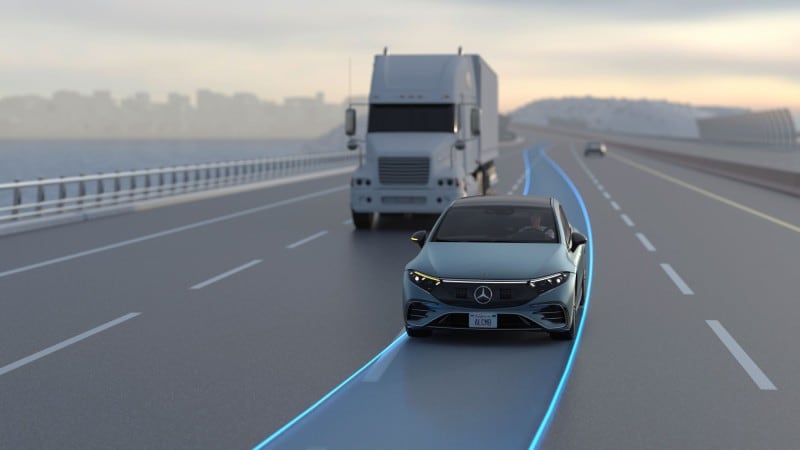
With the “Automatic Lane Change” function, Mercedes-Benz will be offering a further intelligent development of its driving assistance systems in the SAE-Level 2 range for Europe into the future – often also called Level 2+. The company is currently working on adapting the function to European traffic situations. The market launch is scheduled to coincide with delivery of the first units of the new E-Class. Automatic Lane Change is supported on motorway-like roads with lane markings and structurally separated directional lanes.
Automatic Lane Change, or ALC, is already available in C-Class, E-Class and S-Class, as well as all Mercedes-Benz EQ series vehicles being sold in the U.S. and Canada.
The ALC function is an integral part of Active Distance Assist DISTRONIC with Active Steering Assist. If a slower vehicle is driving ahead, the vehicle can initiate a lane change itself in the speed range of 80-140 km/h and overtake completely automatically if lane markings are detected and sufficient clearance is available. The prerequisite is a road with a speed limit and the vehicle being equipped with MBUX Navigation. The sophisticated system requires no further impulse from the driver to execute the automatic lane change.
With active route guidance, the system also assists in navigating exits and changing highways. Since the responsibility in an SAE-Level 2 system remains with the driver even during the automatic lane change, Mercedes-Benz has deliberately decided that hands must remain on the steering wheel. Safety is Mercedes-Benz's top priority, and this includes ensuring that there is no confusion caused by false expectations, for example.
¹The Mercedes-Benz driving assistance and safety systems are aids, and do not relieve the driver of their responsibility. Please note the information in the Owner's Manual and the system limits which are described therein.

In conjunction with COMAND Online, Active Speed Limit Assist – an engageable subfunction of Traffic Sign Assist – is also able to recognise sign gantries and road works signs. Known limits, such as 50 km/h in built-up areas or 100 km/h on country roads, are also adopted from the navigation system. Active Distance Assist DISTRONIC adapts the vehicle's speed to the recognised speed limits automatically. In certain cases, the speed can be adapted in anticipatory mode on the basis of map data. On roads without speed limits, such as stretches on German motorways, the recommended speed – in this case 130 km/h – is adopted as the set speed. This speed can be adjusted by the driver. The desired maximum speed is always adopted in the course of the journey when the speed limit is lifted. It remains preset until the vehicle leaves the motorway or until the engine is switched off.
In stop-and-go traffic on motorways and similar roads, stops of up to 30 seconds are now possible, within which the S‑Class automatically moves off and follows the traffic ahead.

Active Emergency Stop Assist brakes the vehicle to a standstill in its lane if it detects that the driver is no longer actively driving the vehicle while it is on the move with Active Steering Assist switched on. If there is no steering wheel movement over a predefined period, the system gives the driver a visual and audible prompt to place his/her hands on the wheel. If the driver fails to respond after repeated visual and audible prompts by moving the steering wheel, accelerating, braking or pressing the Touch Control Button on the steering wheel, the car will be slowed down in the identified lane until it comes to a standstill. At speeds below approx. 60 km/h the following traffic is warned by means of hazard warning lamps. When the vehicle comes to a standstill, the parking brake is engaged automatically and the Mercedes-Benz emergency call system is activated. The vehicle is also unlocked, to allow first aiders access to the interior. The functions are aborted as soon as the driver takes control of the vehicle again.
Active Brake Assist with cross-traffic function is able to help the driver avoid impending collisions with vehicles ahead, stationary or crossing vehicles and with people if the driver fails to take any action to defuse the dangerous situation. This assistance takes the form of
- a distance warning from a warning lamp in the instrument cluster, if the distance from a vehicle in front is inadequate
- an additional audible warning when a danger of collision is identified
- autonomous emergency braking to avoid a collision with moving stationary or crossing vehicles ahead
- autonomous emergency braking for pedestrians
- situation-related braking assistance as soon as the driver applies the brakes.
Evasive Steering Assist can support the driver in taking evasive action when pedestrians are detected in the danger zone in front of the vehicle and the driver initiates such action. The system then applies additional steering torque in the direction in which the driver is performing an evasive manoeuvre. This helps the driver to evade the pedestrian in a controlled manner and to stabilise the vehicle on its evasive course.
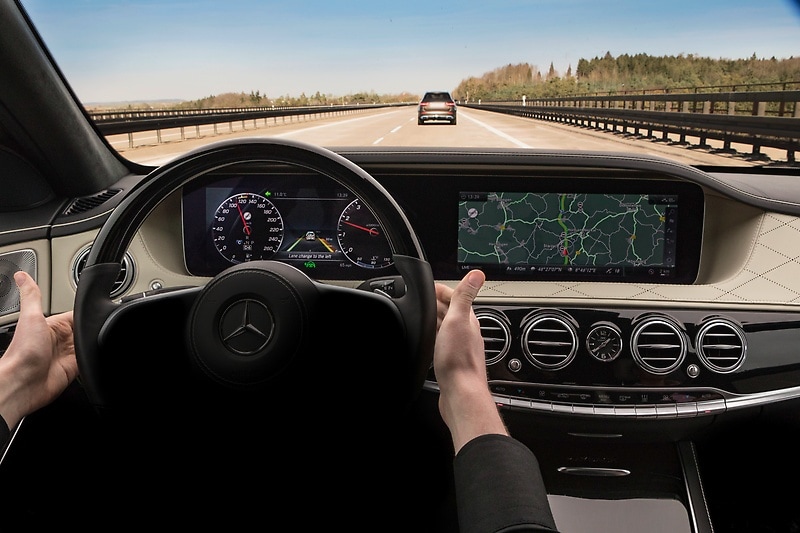
This system is able to warn the driver by means of pulsed vibrations on the steering wheel when the vehicle is unintentionally drifting out of its lane at speeds between 60 and 200 km/h. If the vehicle passes over a continuous line, it can pull the vehicle back into lane by applying the brakes on one side. In the case of a broken line, such intervention takes place only when there is a danger of collision with a vehicle in the next lane (including danger from oncoming traffic).
In the speed range from approx. 10 to 200 km/h, this system is able to provide the driver with a visual alert, plus an audible alarm when a turn indicator is actuated, to warn of a danger of side collisions with other vehicles, including bicycles, for example. At speeds above 30 km/h, automatic braking on one side of the vehicle can additionally be applied to help avoid a side collision at the last moment.
Image recognition and information from the digital road map in the navigation system allow the permitted maximum speed and any restrictions on overtaking for the current route section and zebra crossings to be computed and shown in the instrument cluster. Additional restrictions such as speed limits in wet conditions (warning when the windscreen wipers are switched on) or speed limits for trucks only are also taken into account or ignored as appropriate in the individual case concerned. The road speed is compared with the maximum permissible speed. If set to do so by the driver, a visual/visual-acoustic warning is given if the speed limit is exceeded. No-entry signs are also recognised and the driver is prompted to check the vehicle's direction of travel. A warning additionally appears in the instrument cluster and on the head-up display when persons are detected in the area of zebra crossings.
Information concerning hazardous situations which a vehicle on the road has detected is made available to all other Car-to‑X users to give drivers an early warning. As with Live Traffic Information, reports transmitted by Car-to‑X are shown on the COMAND Online map display. Depending on the situation, a warning by voice output can be given when approaching a hazard.
Active Parking Assist with Parking Assist PARKTRONIC supports the driver in searching for a parking space and when entering or leaving parallel or end-on parking spaces. In the case of end-on parking spaces it is active in both forward and reverse direction. It manoeuvres the vehicle automatically into the selected parking space. In conjunction with Blind Spot Assist, Rear Cross Traffic Alert can warn the driver of cross traffic when reversing out of end-on parking spaces and can also initiate automatic braking if necessary. In the case of Active Parking Assist with 360° camera, all-round vision is made possible by the reversing camera and three additional cameras. The information is presented clearly in full HD in a choice of different views on the central display.
Remote Parking Assist enables the driver to manoeuvre the vehicle into tight parking spaces or garages by smartphone, so as to facilitate entering and alighting from the vehicle. The vehicle can be manoeuvred into parallel and end-on parking spaces in both forward and reverse direction. Manoeuvring out of end-on parking spaces is also possible, e.g. if the driver returns to their vehicle to find that it has been blocked in. In Explore mode the vehicle can be manoeuvred straight forward or in reverse by up to fifteen meters, avoiding detected obstacles. In narrow passageways, following confirmation by the driver the vehicle is able to fold in the exterior mirrors so that it can approach the detected obstacle more closely (e.g. narrow garage entrance).
Autonomous research driving
The beginnings of autonomous driving at Mercedes-Benz go back almost 30 years. The so-called PROMETHEUS project ("Programme for European Traffic with Highest Efficiency and Unprecedented Safety") was carried out within the framework of the European "Eureka" research initiative from 1986 to 1994 - a unique collaboration up to that time between all major European automotive manufacturers, suppliers and numerous scientific institutes. The aim of the project was to highlight new perspectives for the traffic of the future. Many years of pioneering work resulting in around 1,000 autonomously covered kilometers in highway traffic around Paris.
Since that time, the further development of this technology and sensor system has continued without interruption. The fact that autonomous driving is already possible today has been demonstrated by the S 500 Intelligent Drive research vehicle. Exactly 125 years after Bertha Benz's first car ride from Mannheim to Pforzheim, the S-Class completed the approximately 100 km-long route completely autonomously in August 2013 – in high-density traffic and complex traffic situations.
